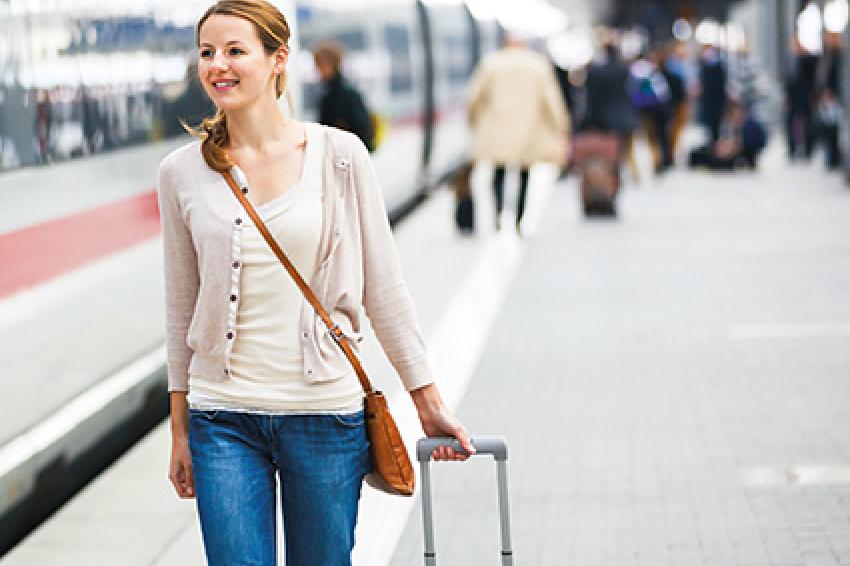Security for Public Transportation - Advances Through Intelligent Systems
23.01.2014 - Public transport has long been identified as a favoured target for terrorists. The Madrid train bombing in 2004, in which 191 people were killed and 1,800 were wounded, is one rece...
Public transport has long been identified as a favoured target for terrorists. The Madrid train bombing in 2004, in which 191 people were killed and 1,800 were wounded, is one recent example. Mass transportation is attractive to terrorists because it is open and fully accessible and carries a high concentration of people into highly populated areas. An attack on transport infrastructure could inflict mass casualties, reduce public confidence in mass transit and could produce a significantly negative effect on the economy. Unfortunately, the large geographical spread of public transport networks makes them difficult to monitor, providing potential spots for other forms of criminal activity such as robbery and damaging. In order to fight terrorist threats and reduce criminal activity more and more video systems are being installed in the public transportation sector and by using video analytics for video systems they have evolved beyond fulfilling basic security needs.
Approaches Beyond the Security Aspect
Advanced features such as traffic monitoring functions and the detection of traffic flows are the most obvious applications. On a basic level, the ability to identify the movement and speed of vehicles that can be used to monitor perimeters and detect suspicious behaviour within defined areas, but video analytics enables video systems to do even more.
We have already seen how valuable flow analysis and how it can be used to improve the retail business processes; to direct the flow of visitors towards attractive products in retail stores helps to lift the sales figures and the public transportation business; to improve the business process and to secure revenue.
With video analytics installed, one can recognize when the flow pattern of a scene is disrupted and record and store the event. Such disruptions can lead to a security problem, but can also disturb the normal operation and lead to queues, customer complaints and delays of transportation vehicles. Flow analysis tools can also help to optimize the flow patterns in busy railway stations, airport and bus terminals by improving the planning of checkout line staffing and providing a long-queue alert in real-time as in the retail market. This helps transportation managers to redeploy staff to the ticketing or information counters.
Video Analysis Helps with Business Performance
However these are not the only ways in which flow analyses can enhance business performance; it can also be used for accounting purposes. Passenger flow can mean cash flow and in a lot of cities the public transportation is not managed by a single enterprise. Public companies, sometimes represented by different regional operators, connect their service with the service of privately owned companies. Within big cities there are several hubs where people can change from one bus to another or from train to bus. For the passenger this often means changing from one service provider to the next, without the need to buy a new ticket and without the need to care whose service they use. A monthly pass for a certain region is convenient for the passenger but complicated for accounting for the business partners offering such a service. An intelligent system can provide a solution to this however as pre-existing camera can be used to monitor passenger flows.
Due to smart virtual tripwire technology used in a modern cameras and video management systems directional counting of incoming and outgoing people with only one camera provides highly accurate and reliable frequency statistics even in complex entry situations. It is possible to detect exactly how many people change from bus line A to B at a hub, making schedule planning and coordination and accounting easier.
To improve bus or railway schedules a variety of tools are available. You can let your passengers fill out surveys and you can go through hundreds of questionnaires. You can count how many passengers use every single train or bus by hand or you can simply analyse your video data with an intelligent system.
Additionally, as in the retail business, you can get more information out of the cameras. Gender analysis and age profiling can assist in product differentiation and are valuable tools to optimize marketing and attract new customers.
Focus on Safe Business Operation
In some new projects recently described in GIT SECURITY like the cover story about the Matterhorn Gotthard Bahn in GIT SECURITY 5/2013 the need for better security on the stations or the fight against vandalism had lower priority. Much more important was the desire to have a better ability to generally provide the passengers with more information on the platforms. The focus was on being able to see even the most remote station at a central point at any time so that staff can react effectively to specific situations and any possible danger. Intelligent systems manage to overcome the hurdle of increasing the information available and enhance the safety of the passengers. The integration of video surveillance with modern passenger information systems no-one has to wait on passenger platform anymore with no idea what to do. In a central control room images of the local situation can be bundled and from there the management can inform passengers with announcements and via the display boards.
Heiko Baumgartner









